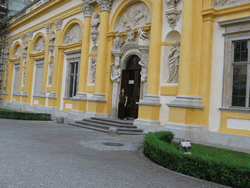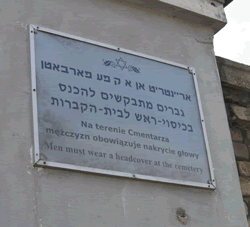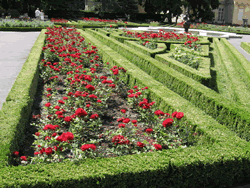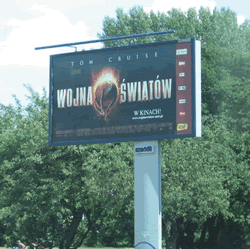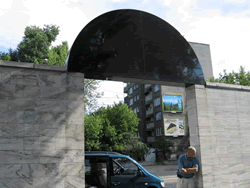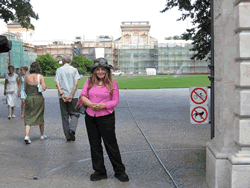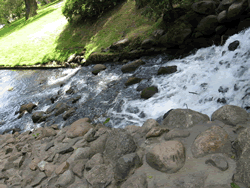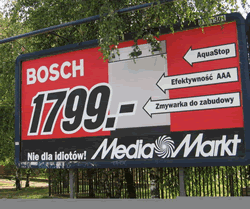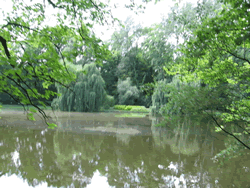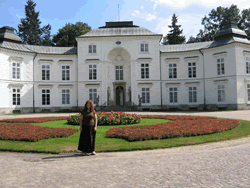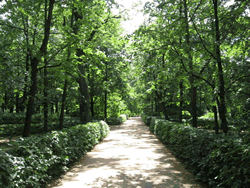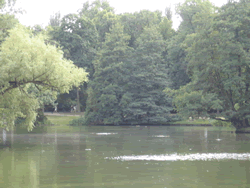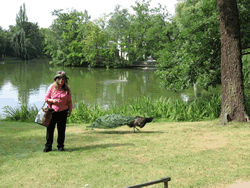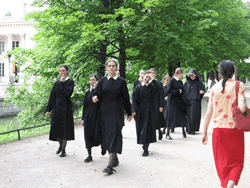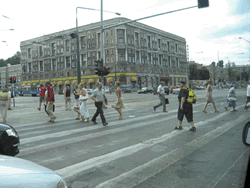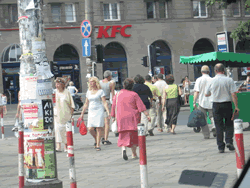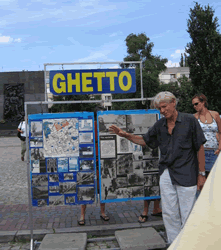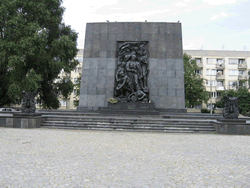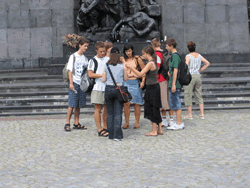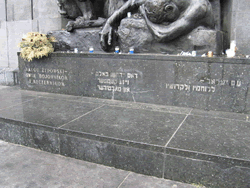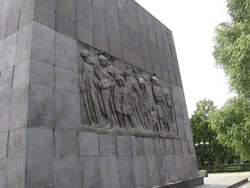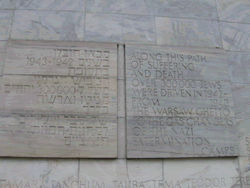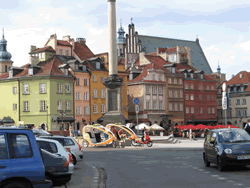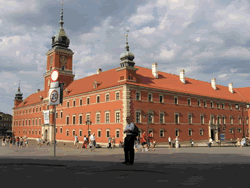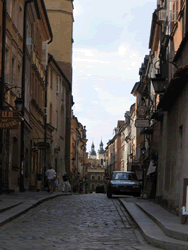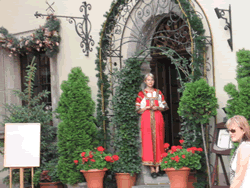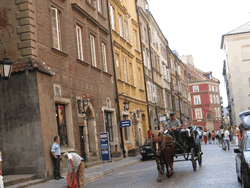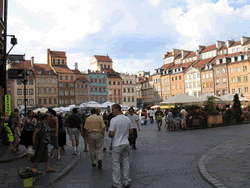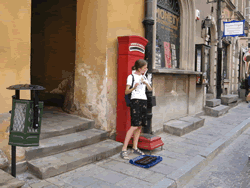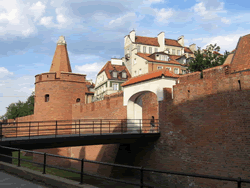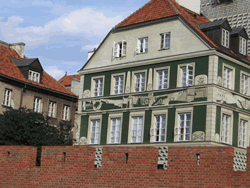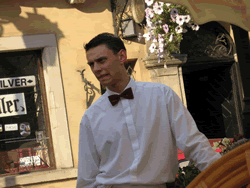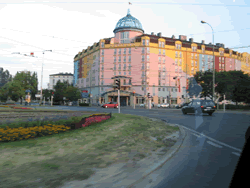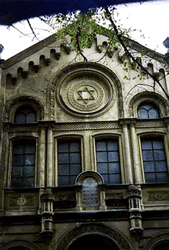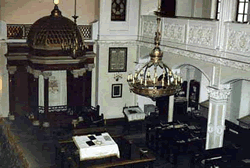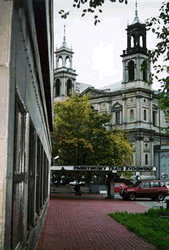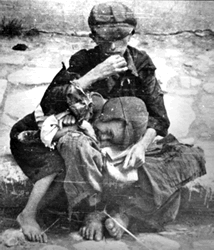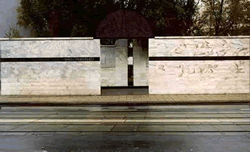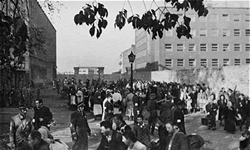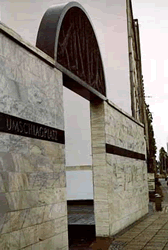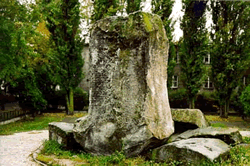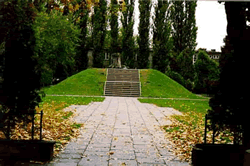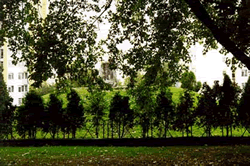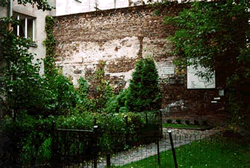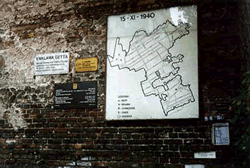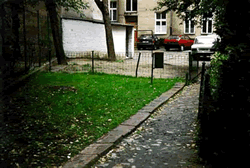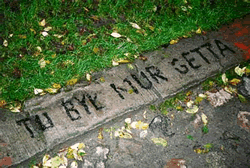|
#wrsw_ns-1: |
#wrsw_ns-2: |
|
#wrsw_ns-3: |
#wrsw_ns-4: |
|
#wrsw_ns-5: |
#wrsw_ns-6: |
|
#wrsw_ns-7: |
#wrsw_ns-8: |
|
#wrsw_ns-9: |
#wrsw_ns-10: |
|
#wrsw_ns-11: |
#wrsw_ns-12: |
|
#wrsw_ns-13: |
#wrsw_ns-14: |
| #wrsw_ns-15: |
#wrsw_ns-16: |
#wrsw_ns-17: |
#wrsw_ns-18: |
#wrsw_ns-19: |
#wrsw_ns-20: |
#wrsw_ns-21: |
#wrsw_ns-22: |
#wrsw_ns-23: |
#wrsw_ns-24: |
#wrsw_ns-25: |
#wrsw_ns-26: |
#wrsw_ns-27: |
#wrsw_ns-28: |
#wrsw_ns-29: |
#wrsw_ns-30: |
#wrsw_ns-31: |
#wrsw_ns-32: |
#wrsw_ns-33: |
#wrsw_ns-34: |
#wrsw_ns-35: |
#wrsw_ns-36: |
#wrsw_ns-37: |
#wrsw_ns-38: |
#wrsw_ns-39: |
#wrsw_ns-40: |
#wrsw_ns-41: |
#wrsw_ns-42: |
#wrsw_ns-43: |
#wrsw_ns-44: |
| #wrsw_ns-45: |
#wrsw_ns-46: |
: <Nowkarz@aol.com>
Date: Nov 24, 2007 9:10 AM
Subject: Re: Warsaw pictures
To: eilat.gordinlevitan@gmail.com
I'd like to write more about the page I sent you
(www.stalus.iq.pl/show.php). ... I chose a few streets which were
inhabited by Jews in the pre-war period, and am going to translate
their captions.
Nalewki Street - (Today Ghetto's Heroes) Beadecker, from 1893, says
that it was inhabited by Jewish merchants which turned all the
apartments & yards into shops and wholesale firms.
Gesia Street - (Today, Anielewicza) This street leads from Nalweki to
Okopow to the Jewish cemetery. All the Jewish funeral processions were
led along this street.
Grainiczna Street - Mostly inhabited by the Jewish population. Between
the wars, it was one of the busiest streets in Warsaw.
Dluga Street - Pasaz Simonsa (Simons Passage). This passage is the
origin of Nalewki Street and it is the beginning of the Jewish
district.
Plac Zelaznej Bramy - The biggest market place in Warsaw. Beadecker,
from 1904, says that the Lubomirski Palace, which is located in the
Plac Zelaznej Bramy, belonged to the Jewish merchant and it was a
place where Jewish weddings were hosted. Under its pillars there were
Jewish market stalls.
Tlomackie Street - postcards of the Great Synagogue.
Plac Grzybowski - Popular market place.
The caption under all these postcards reads "dzis" - today, and you
can see how it all looks today. There is also "wyslij pocztowke" which
means send as a postcard.
On this page there is also another theme.
Ludzie miasta - Faces of the inhabitants.
One of the displayed postcards shows an old Jew sitting on Grzybowska
Street.
Another theme, Obiekty Sakralne (Sacred places).
One of the postcards shows an old synagogue in Praga district.
There is also one interesting link, under the #12 : this is a website
of Piotr Orlik, containing also old postcards (it has an English
version).
I don't have much information about the other website
(www.warszawa.przedwojenna.prv.pl) . It won't be updated, there is no
place on the server.
Zdjecia - Photos
Linki - Links
Poczta - Mail
The third site; www.warszawa1939.pl displays many interesting facts
about the capital. Click on MUZEUM and then on the right side ALBUM.
Then after clicking on ZOBACZ you can see an interesting album with
rare pictures of streets of Warsaw during the German occupation; the
album includes a chapter "ghetto is burning." On the photos you can
see the wall on the crossing on Sienna and Zielna street and Sienna
and Wielka street.
I have tried to translate everything which might be interesting for
you, best wishes and if you have any questions you can always contact
me.
Katarzyna
Warsaw is a diamond in the rough
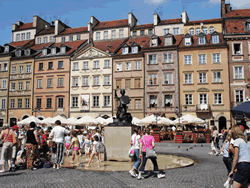
Visitors to Warsaw are astonished to learn that the 'medieval' buildings ringing the Old Town Square are 20th-century reconstructions.
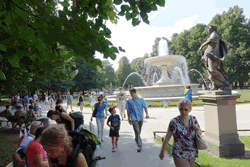
Warsaw’s magnificent azienki Park, filled with Neoclassical palaces, statuary, and water features, is a great place to see Poles at play. Rick Steves
Rick Steves, For Postmedia News | Sep 01, 2015 |
Warsaw, the capital of Poland, doesn’t appear at the top of many European travellers’ wish lists. But that’s just one reason you may want to visit. With evocative sights, an epic history, and low prices, Warsaw is a diamond in the rough.
If you’re looking for Old World quaintness, head for Kraków. If you’re tickled by spires and domes, get to Prague. But if you want to experience a truly 21st-century city, Warsaw’s your place. Huge, famous, and important, Warsaw is the country’s cosmopolitan business hub.
Warsaw has good reason to be a city of the future: the past hasn’t been very kind. Since becoming Poland’s capital in 1596, Warsaw has seen wave after wave of foreign rulers and invasions — especially during the last hundred years.
But in this horrific crucible, the enduring spirit of the Polish people was forged. As one proud resident told me, “Warsaw is ugly because its history is so beautiful.”
The city’s darkest days came during the Nazi occupation of the Second World War. First, its Jewish residents were forced into a tiny ghetto. They rose up — and were slaughtered. Then, its Polish residents rose up — and were slaughtered. In retaliation, Hitler ordered the block-by-block destruction of the city.
While the Nazis destroyed the city, the approaching Soviets sat across the river, watching and waiting. As the smoke cleared and the Nazis retreated, the Red Army marched in and claimed the pile of rubble that was once Warsaw. It would be another 45 years before the Soviets would leave and the Poles could freely govern their capital and their country.
After the war they almost gave up on re-creating old Warsaw, but ultimately the Poles decided to rebuild, constructing a city of contrasts, with painstakingly restored medieval lanes, pedestrian-friendly parks, and sleek skyscrapers.
Today’s Warsaw is safer, wealthier, and happier than ever (they even dodged the Great Recession).
You’ll encounter stylishly dressed locals, sophisticated shopping boulevards, and thoughtful museums covering the Second World War, Jewish history, hometown composer Frédéric Chopin, and Polish art.
The city has two historic districts: the 13th-century Old Town and the 15th-century New Town. Both are nearly complete 20th-century reconstructions, right down to the higgledy-piggledy charm of the colourful buildings. Two generations after the war, it is amazing to see vacationing Germans and Russians stroll through the Old Town Square joking, enjoying ice cream cones, and snapping photos.
The countless restaurants in the historic district provide a good introduction to Polish cuisine — and the national drink, vodka. Many traditional dishes — herring, cold cuts, pickles, steak tartare — pair naturally with chilled vodka.
I learned Poles don’t sip their vodka, it’s bottoms up (that way it only stings once on the way down).
For me, the pleasure of Warsaw is just connecting with its big-city people, who are as warm and charming as small-town folk.
Remnants of Warsaw’s earlier magnificence show up in the huge, idyllic azienki Park. It’s sprinkled with Neoclassical buildings, peacocks, and young Poles in love. Poland’s very last king built the park in the 18th century for his summer residence and as a place for his citizens to relax.
A monument to Chopin, Poland’s great Romantic era composer and favourite son, graces the park’s rose garden. Even though Chopin left Warsaw for Paris, his final wish was to have his heart brought back to his native Poland. And so it was, after his death in 1849. It now lies buried in a pillar in Warsaw’s Holy Cross Church (the rest of him is interred at Paris’ Père Lachaise Cemetery).
Locals still proudly celebrate the composer’s music. On a recent visit, I attended an informal Chopin salon — an intimate evening of beautiful music, wine, and cheese hosted by my bed and breakfast. Joining a group gathered around a shiny grand piano, listening to young artists performing Chopin’s études, felt “very Warsaw.”
Eating apples has become a patriotic act here. Reacting to international sanctions brought on by the conflict in Ukraine, Russia has halted fresh produce imports from the European Union — including Poland. Now Poland is awash in apples grown for export to Russia. Standing on Warsaw’s Old Town Square, knowing how the Red Army watched from across the river as the Nazis levelled the city, it’s particularly poignant to see feisty Poles eating apples to piss off Vladimir Putin.
The resilience of Poland’s culture and the warmth of its people inspire me. Thankfully, these are good times in Poland, a country with a rich past and an exciting future.
Rick Steves (ricksteves.com) writes European travel guidebooks and hosts travel shows on public television and public radio. Email him at rick@ricksteves.com and follow his blog on Facebook.
Nozyk Synagogue in Warsaw
http://www.scrapbookpages.com/Poland/WarsawGhetto/WarsawGhetto06.htm
Upper floors of Nozyk Synagogue
The Nozyk Synagogue is located at number 6 Twarda Street in an area of Warsaw that was originally inside the Little Ghetto in 1940, but was later outside the Ghetto after it was made smaller, following deportations. According to my tour guide, this Synagogue is the only one in Warsaw that survived the war; it was used by the Nazis as a stable for their horses and as a storehouse for food for the horses. The desecration of Synagogues and Jewish cemeteries was a common way for the Nazis to show their hatred of the Jews. Out of thousands of Synagogues in Poland, there are only about 245 remaining. All of the unique wooden Synagogues were destroyed, although some 17th century wooden Catholic Churches remain to this day.
The Nozyk Synagogue was named for the man who founded it in 1900, Zalman ben Menasze Nozyk and his wife Rywka bat Mosze. (Some guidebooks says it was founded in 1902.) Upkeep on the Synagogue is paid for by funds provided by Zalman Nozyk in his will.
The photograph above shows the upper floor of the Synagogue and the one below shows the front door. Both of these photos were taken in October 1998. A yellow sign on the door tells visitors that there is no admittance at this door. The front door had been recently damaged by fire, set by an arsonist, when I visited it. According to my tour guide, there have been fires set at other Synagogues in Poland, and even some fires set at Catholic churches, despite the guards that are posted.
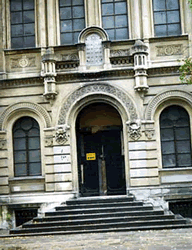
Entrance to Nozyk Synagogue after arson fire in September 1998
The Nozyk Synagogue suffered damage in the Warsaw uprising of August 1944, but was partially restored and reopened in 1945 when a few survivors returned to Warsaw. Work on restoration of the building began in 1977 and was completed in 1983. On April 19, 1983, the 50ieth anniversary of the ghetto revolt, services were held again for the first time since restoration began. The anniversary service was attended by both Jews and Catholics. Since then, services have been held here every Friday night and every Saturday for about 500 active Jews in Warsaw, according to my tour guide.
The photo below shows the interior of the Synagogue, taken from the women's gallery. Part of this gallery is shown on the right side of the picture. The Holy Ark (Aron ha Kodesh) on the east wall is shown on the left side of the picture.
Interior of Nozyk Synagogue, taken from women's gallery
On the western side of Grzybowski Place, just around the corner from the Nozyk Synagogue, is a theater built on the site of some former Jewish homes and shops which were destroyed in World War II. Before the war, Plac Grzybowski was a busy and colorful market square for Jewish merchants. Inside the theater, there is an impressive lobby and some photographs of the Jewish quarter in Warsaw, taken before the war. In the same building there were the offices of a Jewish newspaper and a Jewish travel bureau called Our Roots when I visited in 1998.
When we were there, the theater was presenting the musical "Fiddler on the Roof," the story of life in a Jewish village in the Pale of Settlement, a strip of land in what is now the Ukraine and eastern Poland, where the Russian Jews were forced to live between 1835 and 1917. Between 1881 and the start of World War I in 1914, two million Jews were expelled from the villages in the Pale by the "May Laws" passed by the Russians. The story in "Fiddler on the Roof" ends with this expulsion which started the largest mass migration of people in history; many of the Jews who left the Pale emigrated to America. Some chose to settle in Germany or Austria; before World War I, part of western Poland was included in the Austrian Empire or Germany. Half a century later, their families again became victims, this time victims of the Nazis.
The picture below shows the side of the modern theater building with a marquee sign on the entrance in front of it. Just across from it is a Catholic Church. The Nozyk Synagogue and the Church are only about a block apart. This Catholic Church faced the former Jewish market square, called Plac Grzybowski. This area was in the Little Ghetto section of the original Warsaw Ghetto.
Yiddish Theater to the left with Catholic Church in background
The Warsaw Ghetto
http://www.scrapbookpages.com/Poland/WarsawGhetto/Introduction.html
The Warsaw Ghetto
Jewish children in the Warsaw Ghetto in 1942
Before World War II started on September 1, 1939, there were 375,000 Jews living in Warsaw, as many as in all of France, and more than in the whole country of Czechoslovakia. Only the city of New York had a larger Jewish population than Warsaw.
The first Jews had settled in Warsaw after King Kasimierz the Great welcomed Jewish refugees from Western Europe to Poland in the 14th century, but during the 15th century they were expelled from the city of Warsaw, just as they were in Krakow. Between 1527 and 1768, Jews were banned from living in Warsaw.
After Poland was partitioned for the third time in 1795 between Russia, Prussia and Austria, the Jews began coming back to Warsaw, which was in the Russian section, and by the start of World War I, Jews made up forty percent of the population of the city. During the 19th century and up until the end of World War I, Warsaw was in the Pale of Settlement where all Russian Jews were forced to live; when Poland regained its independence after World War I, Warsaw was once again a Polish city. From the beginning, the Jewish district was located southeast of Old Town Warsaw.
The Nazis liked to take action against the Jews on Jewish holidays, so it was on Yom Kippur, the Jewish Day of Atonement, that the announcement was made on October 12, 1940 that "Jewish residential quarters" were to be set up in Warsaw. The Ghetto would comprise 2.4 percent of the city's land, but would contain 30% of the city's population, according to the U.S. Holocaust Museum. To create the Ghetto, the Nazis moved 113,000 Christian residents out and moved 138,000 Jewish residents in. The rest of the Warsaw Jews were already living in the neighborhood of the Ghetto.
In the Warsaw Ghetto, 450,000 Jews were forced to live in very crowded conditions. The population of the Ghetto included Jews from the surrounding villages in the General Government of German occupied Poland. The Ghetto was divided into two sections, the Small Ghetto at the southern end and the Large Ghetto on the north. By the time deportations to the extermination camps began, about 100,000 residents of the Ghetto had died of starvation or disease, according to Raul Hilberg.
The Umschlagplatz
Umschlagplatz Monument resembles railroad freight car
Pictured above is a memorial which has been built on ul. Stawki at the spot where the Umschlagplatz once stood, on the northern boundary of the Warsaw Ghetto. The Umschlagplatz was where the Jews in the Warsaw Ghetto had to assemble to board the trains which transported them to the death camp atTreblinka, beginning in July 1942.
The Jewish Ghettos, which the Nazis established in all the major Jewish population centers of Poland, were part of the systematic plan to get rid of all the Jews in Europe, and were intended as a transitional measure. The next stage of the plan was the liquidation of the Ghettos and "transportation to the East."
On July 22, 1942 the Warsaw Ghetto was surrounded by Ukrainian and Latvian soldiers in German SS uniforms, as the liquidation of the Ghetto began in response to an order given by Reichsführer-SS Heinrich Himmler that "the resettlement of the entire Jewish population of the General Government be carried out and completed by December 31." The General Government was the central portion of the former country of Poland that was occupied by the Germans between 1939 and 1944.
Jews assemble at Umschlagplatz for deporatation
Two days before, on July 20ieth, the Judenrat (Jewish leaders) had been ordered to prepare for the resettlement (Aussiedlung) of the "non-productive elements" to the East. The Jews in the Warsaw Ghetto were to report voluntarily to the Umschlagplatz (collection point) at the corner of Stawki and Dzika streets, near a railroad siding for the Ostbahn (Eastern Railroad), on which they would be "transported to the East" on crowded freight cars. The old photograph above shows the location of the Umschlagplatz. A monument has been erected on this spot, as shown in the photo at the top of this page.
According to Raul Hilberg in his book, The Destruction of the European Jews, "As soon as the order was posted, a mad rush started for working cards. Many forgings took place and in the ghetto, everyone from top to bottom was frantic." A similar scene is depicted in the movie, Schindler's List, when a Jewish professor in Krakow suddenly becomes an experienced metal worker with forged papers, aged by tea stains.
The chairman of the Warsaw Jewish Council, Adam Czerniakow, was ordered by the Nazis to deliver 6,000 Jews per day, seven days a week, to the Umschlagplatz for deportation to Treblinka on the Bug river near the eastern border of German occupied Poland. A day later, the number was increased to 7,000 per day. Rather than cooperate with the Nazis, Czerniakow committed suicide on July 23rd, the first day that Jews were assembled ready for deportation.
After Poland was conquered, following the joint invasion by the Germans and the Soviet Union in September 1939, the Polish Army escaped to Romania and the Polish leaders set up a government in exile in London. The Polish soldiers continued to fight underground as partisans in the Polish Home Army.
Raul Hilberg wrote the following in his book, The Destruction of the European Jews:
The Polish underground thereupon contacted the Ghetto. The answer of the Jewish leaders was that perhaps 60,000 Jews would be deported, but that it was "inconceivable that the Germans would destroy the lot." The Jews had one request, which the Polish Home Army was glad to fulfill. They handed to the Poles an "appeal addressed to the world and to the Allied nations in particular." The Jewish leadership demanded that the German people be threatened with reprisals. The appeal was immediately transmitted to London, but the BBC maintained complete radio silence. As we shall have occasion to find out later, the Jews did not have many friends in London, or for that matter, in Washington.
Side view of Umschlagplatz Memorial
The photo above shows a side view of the memorial at the Umschlagplatz. According to my tour guide, the design is supposed to represent a freight car with the door open. This memorial is located right on the sidewalk of a very busy street; notice the trolley car tracks on the street just a few feet in front of it, which you can see in the photo at the top of this page.
The photo below shows the interior of the memorial with a single bouquet of flowers left by a visitor. The inside is the same rectangular shape as a railroad freight car, although much bigger. The 7,000 Jews who assembled here daily were crowded into 60 freight cars for the train trip to the Treblinka extermination center. The daily deportations continued until Sept. 12, 1942.
Inside of Umschlagplatz Monument in Warsaw
In his book "The Holocaust," Martin Gilbert wrote the following:
"In those seven weeks, a total of 265,000 Jews were sent by train for 'resettlement in the East'. Their actual destination was Treblinka and its three gas-chambers. Death, not slave labour, was their fate. It was the largest slaughter of a single community, Jewish or non-Jewish, in the Second World War."
According to the most recent information about Treblinka, there were originally three gas chambers there, but 10 more were added later. The bodies were first buried in mass graves and then dug up and burned on pyres.
According to the U.S. Holocaust Museum, by the Summer of 1944, all the Jewish Ghettos in Eastern Europe had been closed and two million Ghetto Jews had been transported to concentration camps or death camps. The three main death camps for the Ghetto Jews were the Operation Reinhard camps:Treblinka, Belzec and Sobibor, all of which were near the eastern border of German occupied Poland.
Today guards are posted near the memorial, but even so, the inside walls of this memorial had been defaced with a Nazi swastika when I visited it in October 1998.
Mila 18 in the Warsaw Ghetto
Memorial at Mila 18 honors Jewish heroes of Warsaw
Pictured above is the memorial stone to the Jewish heroes of the Z.O.B. (Jewish Fighting Organization) who died in an underground bunker beneath the house at ul. Mila 18 during the Warsaw Ghetto Uprising in April and May 1943. The stone sits on top of a mound of rubble, where the house at this address once stood; it is turned slightly toward Mila street which is to the left. The street is still named Mila, but #18 is no longer an address there.
When I visited Warsaw in 1998, my tour guide told me that the Mila 18 bunker was the last one to be destroyed in the Warsaw Ghetto Uprising; a book entitled "A travel guide to Jewish Europe" by Ben G. Frank, which I purchased later, mentions that Mila 18 was "the last bunker of the Warsaw Ghetto Uprising."
The following quote is from the book entitled "A Surplus of Memory" by Yitzhak Zuckerman, one of the survivors of the Z.O.B.
The memorial to the Ghetto Uprising was commissioned from the sculptor Nathan Rappoport after I left Poland. Initially, we set up another memorial, a big stone on the bunker of Mila 18. I gave a speech on behalf of the Jewish community at the unveiling of the tombstone, along with a Polish general on April 19, 1945.
Today there is nothing left of the house at Mila 18. According to Martin Gilbert in his book entitled "The Holocaust":
That September, the Germans sent a Polish labour battalion to the site of the ghetto, to demolish any walls and structures, still undestroyed. "Those who still remained in hiding" one of the ghetto's most recent historians has written, "evidently met their deaths during the demolition activities, although a few individuals continued to live in dug-outs, totally cut off from nature, light and human company."
The Germans had planned to make the former ghetto into a huge city park. Instead, the spot where Mila 18 once stood is now in the middle of a neighborhood of new modern buildings.
Mila 18 Stone is inscribed with names of Jewish heroes
Photo credit: Florida Center for Instructional Technology.
The memorial stone at Mila 18 has the names of the leaders of the Warsaw Ghetto Uprising, includingMarek Edelman, the longest living survivor, who died in 2009.
According to a book entitled "The bravest battle, the 28 days of the Warsaw Ghetto," Mila 18 was a self-contained world-within-a world. A long narrow corridor led into numerous underground rooms on either side. A gang of thieves, led by Schmuel Asher, had previously excavated this gigantic bunker under three large adjoining buildings. Asher led Mordechai Anielewicz, the commander of the Z.O.B., to the bunker.
The photograph below shows what the bunkers under the buildings in the Warsaw Ghetto looked like. (This is not a photo of the bunker at Mila 18.)
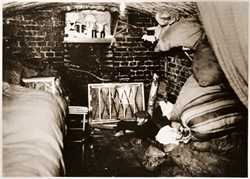
Jews in Warsaw Ghetto hid in underground bunkers
Access to the bunker at Mila 18 was through a house at that address. There were many other bunkers in the Warsaw Ghetto and Mila 18 was the last of them to be destroyed by the Germans. The fighting continued even after Mila 18 fell and other houses that sheltered Jews, but did not have access to a bunker, were attacked.
The attack on the Mila 18 bunker began on May 8, 1943, after the fighting between SS soldiers and the Jews had been going on for almost three weeks. The SS brought in Ukrainian and Latvian auxiliary SS soldiers because they could not speak Polish or Yiddish and thus could not be persuaded by the Jews to allow them to escape, according to Martin Gilbert's book entitled "Holocaust Journey."
For two hours, the Ukrainian and Latvian SS soldiers bombarded the entrance to the house at Mila 18, and then threw tear gas into the bunker to force the occupants out. Unwilling to surrender, many of the resistance fighters took their own lives. Mordechai Anielewicz, the leader of the Z.O.B., was holed up that day in the Mila 18 bunker, along with around 120 of his comrades and around 80 Jews who were not members of the Z.O.B.
A family of Jews surrenders to the SS soldiers
The battle of the Warsaw Ghetto finally ended at 8:15 p.m. on May 16th when the German SS Commander, Jürgen Stroop, declared victory by blowing up the Tlomacki Synagogue outside the walls of the Ghetto. According to the Stroop Report, around 5,000 to 6,000 Jews who were hiding in buildings in the Ghetto were blown up or burned to death and a total of 631 bunkers were destroyed.
The following quote is from the book entitled "The bravest battle: the twenty-eight days of the warsaw ghetto":
As at Masada, where 2000 years earlier a group of Jews decided to kill themselves rather than surrender to the Romans, most of the 120 fighters at Mila 18 chose the same solution, though it was not imposed on anyone. The more than 80 civilians who remained would either surrender or die of asphyxiation in the bunker.
An SS soldier searches a Jew captured during the fighting
The old photos on this page were taken by the SS and put into three photo albums by Jürgen Stroop, the SS commander who led the fight against the Jewish resistance movement. One of these photo albums is now stored in the National Archives in Washington, DC.
The photograph below shows the spot on Mila street where the house once stood. Beyond the trees in the foreground, you can see the grass covered mound of rubble with a memorial stone on the top of it.
Path around mound shows size of house at #18 Mila Street
Just below the steps, in the photo above, you can see a path around the mound. This path is an outline of the actual building which stood at Mila 18. As you can see by the size of the mound, the building was very small. The photo above was taken from the street which is at right angles to Mila street. The actual entrance to the house at number 18 Mila street was formerly in the spot shown in the photo below. The house was set very close to the street. A row of trees has been planted where the sidewalk in front of the house used to be.
The former location of house #18 on Mila Street in Warsaw
Ghetto Wall
The Warsaw Ghetto wall
Last remaining section of Warsaw Ghetto wall
To create the Warsaw Ghetto, the Germans built 11 miles of brick walls around the Jewish quarter; this area was then closed to outsiders on November 15, 1940. The wall was torn down in 1943 when the Ghetto was liquidated. Today there is only one short section of the original wall remaining; this section was outside the Ghetto when the original Ghetto became a smaller area after most of the Jews had been deported.
The photo above shows this remaining section of the wall, which is about 10 feet high. According to my tour guide, parts of the wall which connected two buildings, such as this section, were built higher than the rest of the wall, which was mostly lower than 10 feet. On the wall is a map showing the area of the Ghetto. The courtyard in front of the wall is located at ul. Zlota 62. (Some guidebooks says the address is Number 60 Zlota Street.)
The photo below shows a closeup of the map of the Warsaw Ghetto. The map shows the Ghetto divided into two parts. The top section, on the northern border, is where the Umschlagplatz and Mila 18 were located. The bottom section is where the Nozyk Synagogue, the only one that survived, still stands today.
Map of Warsaw Ghetto on remaining section of wall
The photo below shows the view of the little courtyard, looking from the wall toward the gate. The row of large bricks along the path extend from where the remaining section of the wall ends. This marks the spot where the Ghetto wall used to be.
Edge of path marks where Ghetto wall once stood
The photo below shows a close-up of the stones which mark the former location of the wall. The inscription says "Tu byl mur getta." which in English means "Here was the wall of the ghetto."
This means in English "Here was the wall of the Ghetto."
Jewish Cemetery, Warsaw
From Wikipedia, the free encyclopedia
Warsaw Jewish Cemetery
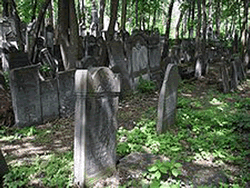
Graves at Okopowa Street Jewish Cemetery.
Details
Established
1806
Location
Warsaw, Poland
Country
Poland
Coordinates
?52°14′51″N 20°58′29″E
Coordinates: ?52°14′51″N 20°58′29″E
Type
Jewish cemetery
Size
33 ha
The Warsaw Jewish Cemetery is one of the largest Jewish cemeteries in Europe and in the world. Located on Warsaw's Okopowa street and abutting the Pow?zki Cemetery at 52°14′51″N 20°58′29″E, the Jewish necropolis was established in 1806 and occupies 33hectares (83 acres) of land. The cemetery contains over 200,000 marked graves, as well as mass graves of victims of the Warsaw Ghetto. Many of these graves and crypts are overgrown, having been abandoned after the German invasion of Poland and subsequent Holocaust. Although the cemetery was closed down during World War II, after the war it was reopened and a small portion of it remains active, serving Warsaw's small existing Jewish population.
As the cemetery was established to replace many smaller cemeteries closer to the city centre, it was designed to serve all Jewish communities of Warsaw, regardless of their affiliation. Because of that it is subdivided into several districts dubbed quarters (kwatery), historically reserved for various groups. Among them are three Orthodox (for men, women and one for holy scriptures), Reform Judaism, children, military and Ghetto Uprising victims.
The cemetery, which has become a dense forest in the post-war period, is filled with monuments to Jewish communists, orthodox rabbis, and everyone in between. Many of the markers are simple, others are elaborately carved with Art nouveau angels drooping mournfully over a tomb or with large, elaborate bas relief panoramas of a somewhat imaginary medieval Warsaw. Large mausoleums appear in styles ranging from Egyptian revival to Art deco.
History[edit]

Jewish graves in Warsaw
In 1806 the Warsaw's Jewish Commune petitioned the government to establish a new cemetery for Jewish inhabitants of Warsaw. The lot chosen was located right outside of the city limits in the borough of Wola, next to a new Catholic Pow?zki Cemetery established in 1790. The petition was accepted and in the following year the cemetery was established, together with Chevra kadisha. The earliest headstonewas dated December 6, 1806 and belonged to certain Nachum son of Nachum of Siemiatycze, but it did not survive to our times. The first woman interred there was certain Elka Junghoff, daughter of Jehuda Leib Mulrat of Kalisz. Her tombstone is dated November 26, 1804, but the date is most likely wrong. Hence the oldest surviving headstone belongs to Sara, daughter of Eliezer (died September 8, 1807).[1]
During the first decades of its existence the new Okopowa Street cemetery was used mostly by the higher strata of Jewish society, with poorer Jews interred in the Praga Jewish Cemetery in the easternmost borough of Bródno, on the right bank of the Vistula. Despite that the cemetery quickly became overcrowded and already in 1824 it had to be expanded. Around that time the Tsarist authorities took over the administration of the cemetery from Chevra kadisha and by 1850 established a separate Funeral Administration. The first on-site funeral home was established in 1828, but already in 1831 it was destroyed by Russian Army in the course of the November Uprising. A new building was erected the following year and further expanded in 1854. In the meantime the necropolis was extended twice: in 1840 and 1848. Around that time it became the main Jewish cemetery of Warsaw, for rich and poor alike.
Historically the cemetery was separated from the city centre and the quarter inhabited by Jews by a deep ditch, the so-called Lubomirski's Rampart, created in 1777 to stop the spread of plague and as a tax measure. It was not until 1873 that both Jewish and Catholic communities were allowed to build a bridge across the ditch to facilitate access to both cemeteries. In 1860 and 1863 the cemetery was extended again and in 1869 reached its present form. However, it began to overcrowd and in 1885 all burials financed by the Jewish community (i.e. of the poor) were directed to the Bródno Jewish Cemetery. In 1877 several notable Jewish families of Warsaw financed a new late Neo-Classical building by Adolf Schimmelpfennig housing a synagogue and two burial houses (one for men and one for women). The second floor was reserved for rabbi's flat.
As the cemetery was used by all groups of Warsaw's Jewry, conflicts arose over control of the cemetery and various burial-related issues. In 1913 it was agreed to split it onto four parts: one for Orthodox Jews, one for Reformed, one for Children and one for military and state burials. After World War I the cemetery again became overcrowded. Because of that a mound or earthwork terrace was erected over a quarter previously reserved for children to allow for more burials. Between 1918 and 1936 fourteen such mounds were created. In the 1930s the entire cemetery was surrounded with a high wall and in 1939 a construction started on Mausoleum of Jews Fighting for Polish Independence. Works were stopped by the outbreak of World War II and German occupation of Poland.
During the war the cemetery had been partly demolished. German forces used it for mass executions and burial of victims of Warsaw Ghetto, the Warsaw Ghetto Uprising, Warsaw Uprising of 1944 and other mass murders. Those burials included both Jews and non-Jews. Following the fall of the Ghetto Uprising, on May 15, 1943 the Germans blew up all buildings in the area of the cemetery, including the synagogue and burial houses. Only a small well survived to this day. Further damage was done to the cemetery during the Warsaw Uprising of 1944, when the front line passed directly through the cemetery. After the war the cemetery was reopened. The Communist authorities of Poland planned a road directly through the middle of the cemetery, but the plans were never carried out.
In the 1990s the neglected cemetery started to be renovated for the first time since the 1930s, mostly by the re-created Warsaw Jewish Commune and the Nissenbaum Family Foundation, as well as the City of Warsaw municipal government. The cemetery is still open, with 20 to 30 new burials every year.
Notable interments[edit]
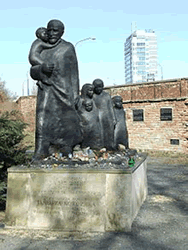
Monument (Cenotaph) of Janusz Korczak
• Solomon Anski, writer (Solomon Zangwill Rappaport), author of "The Dybbuk"
• Szymon Askenazy, archaeologist
• Meir Balaban
• Naftali Zvi Yehuda Berlin, Rosh yeshiva of the Volozhin Yeshiva and author of several major Jewish works
• Mathias Bersohn, philanthropist
• Adam Czerniakow, head of the Judenrat in the Warsaw Ghetto
• Szymon Datner, historian
• Jacob Dinezon (1852–1919), writer
• Marek Edelman
• Maksymilian Fajans, artist, lithographer and photographer
• Maurycy Fajans, founder of the first steamboat line on the Vistula
• Alexander Flamberg, chess master
• Edward Flatau, neurologist
• Uri Nissan Gnessin, writer
• Samuel Goldflam, neurologist
• Ester Rachel Kami?ska (1870–1925), the "mother of Yiddish Theater", mother of Ida Kaminska
• Micha? Klepfisz
• Izaak Kramsztyk, rabbi and lawyer
• Aleksander Lesser, painter and art critic
• Szlomo Zalman Lipszyc, first Chief Rabbi of Warsaw
• Dow Ber Meisels, rabbi of Kraków and Warsaw
• Samuel Orgelbrand, publisher of the Universal Encyclopaedia
• Isaac Loeb Peretz (1852–1915) one of the most important Yiddish language writers of the 19th-20th centuries
• Samuel Abraham Pozna?ski
• Józef Ró?a?ski, communist activist
• Hayyim Selig Slonimski, Hebrew publisher, astronomer, inventor and science author
• Chaim Soloveitchik, founder of the Brisk rabbinic dynasty & the "brisker method" of Talmudic study
• Julian Stryjkowski, (born Pesach Stark) 1905-1996, writer, author of "Austeria" "Voices in Darkness"
• Hipolit Wawelberg, founder of Warsaw Technical College,
• Szymon Winawer, chess player
• Lucjan Wolanowski
• Ludwik Zamenhof, doctor and inventor of Esperanto.
See also[edit]
• History of the Jews in Poland
